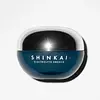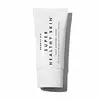What's inside
What's inside
 Key Ingredients
Key Ingredients

 Benefits
Benefits

 Concerns
Concerns

 Ingredients Side-by-side
Ingredients Side-by-side

Maris Aqua
HumectantWater
Skin ConditioningButylene Glycol
HumectantGlycerin
HumectantSqualane
EmollientSaccharomyces/Xylinum/Black Tea Ferment
Skin ConditioningMethyl Gluceth-20
HumectantPentylene Glycol
Skin ConditioningAcrylates/C10-30 Alkyl Acrylate Crosspolymer
Emulsion StabilisingSaccharide Isomerate
HumectantPolyglycerin-3
HumectantPhytosteryl/Octyldodecyl Lauroyl Glutamate
Skin ConditioningXylitol
HumectantBetaine
HumectantSodium Hydroxide
BufferingParfum
MaskingHydroxyethylcellulose
Emulsion StabilisingDisodium EDTA
Dipotassium Glycyrrhizate
HumectantEthylhexylglycerin
Skin ConditioningZinc Gluconate
Skin ConditioningMagnesium Aspartate
Skin ConditioningPhenoxyethanol
PreservativeSodium Citrate
BufferingUndaria Pinnatifida Extract
Skin ConditioningCitric Acid
BufferingTocopherol
AntioxidantAlpha-Isomethyl Ionone
PerfumingChlorella Vulgaris Extract
Skin ConditioningCopper Gluconate
Skin ConditioningBenzyl Salicylate
PerfumingPotassium Sorbate
PreservativeTetradecyl Aminobutyroylvalylaminobutyric Urea Trifluoroacetate
Skin ConditioningGeraniol
PerfumingLimonene
PerfumingMagnesium Chloride
Biotin
AntiseborrhoeicMaris Aqua, Water, Butylene Glycol, Glycerin, Squalane, Saccharomyces/Xylinum/Black Tea Ferment, Methyl Gluceth-20, Pentylene Glycol, Acrylates/C10-30 Alkyl Acrylate Crosspolymer, Saccharide Isomerate, Polyglycerin-3, Phytosteryl/Octyldodecyl Lauroyl Glutamate, Xylitol, Betaine, Sodium Hydroxide, Parfum, Hydroxyethylcellulose, Disodium EDTA, Dipotassium Glycyrrhizate, Ethylhexylglycerin, Zinc Gluconate, Magnesium Aspartate, Phenoxyethanol, Sodium Citrate, Undaria Pinnatifida Extract, Citric Acid, Tocopherol, Alpha-Isomethyl Ionone, Chlorella Vulgaris Extract, Copper Gluconate, Benzyl Salicylate, Potassium Sorbate, Tetradecyl Aminobutyroylvalylaminobutyric Urea Trifluoroacetate, Geraniol, Limonene, Magnesium Chloride, Biotin
Water
Skin ConditioningDimethicone
EmollientButylene Glycol
HumectantGlycerin
HumectantRicinus Communis Seed Oil
MaskingCaprylic/Capric Triglyceride
MaskingDipentaerythrityl Hexacaprylate/Hexacaprate
EmulsifyingDimethicone/Vinyl Dimethicone Crosspolymer
Skin ConditioningCetyl Alcohol
EmollientHydroxyethyl Acrylate/Sodium Acryloyldimethyl Taurate Copolymer
Emulsion StabilisingLauroyl Lysine
Skin ConditioningPhenoxyethanol
PreservativeSqualane
EmollientSaccharide Isomerate
HumectantButyrospermum Parkii Butter
Skin ConditioningPotassium Cetyl Phosphate
EmulsifyingAcrylates/C10-30 Alkyl Acrylate Crosspolymer
Emulsion StabilisingEthylhexylglycerin
Skin ConditioningPhysalis Angulata Extract
Skin ProtectingChlorphenesin
AntimicrobialPolysorbate 20
EmulsifyingPolysorbate 60
EmulsifyingSodium Hydroxide
BufferingDisodium EDTA
Sorbitan Isostearate
EmulsifyingCitric Acid
BufferingSodium Hyaluronate
HumectantSodium Citrate
BufferingTocopherol
AntioxidantCalendula Officinalis Flower Extract
MaskingDaphne Odora Callus Extract
Skin ProtectingAcetyl Tetrapeptide-2
Skin ConditioningDextran
Water, Dimethicone, Butylene Glycol, Glycerin, Ricinus Communis Seed Oil, Caprylic/Capric Triglyceride, Dipentaerythrityl Hexacaprylate/Hexacaprate, Dimethicone/Vinyl Dimethicone Crosspolymer, Cetyl Alcohol, Hydroxyethyl Acrylate/Sodium Acryloyldimethyl Taurate Copolymer, Lauroyl Lysine, Phenoxyethanol, Squalane, Saccharide Isomerate, Butyrospermum Parkii Butter, Potassium Cetyl Phosphate, Acrylates/C10-30 Alkyl Acrylate Crosspolymer, Ethylhexylglycerin, Physalis Angulata Extract, Chlorphenesin, Polysorbate 20, Polysorbate 60, Sodium Hydroxide, Disodium EDTA, Sorbitan Isostearate, Citric Acid, Sodium Hyaluronate, Sodium Citrate, Tocopherol, Calendula Officinalis Flower Extract, Daphne Odora Callus Extract, Acetyl Tetrapeptide-2, Dextran
Ingredients Explained
These ingredients are found in both products.
Ingredients higher up in an ingredient list are typically present in a larger amount.
Acrylates/C10-30 Alkyl Acrylate Crosspolymer is a synthetic polymer. It is used to thicken and improve the texture of products. Due to its properties, it can prevent water and oil ingredients from separating.
Butylene Glycol (or BG) is used within cosmetic products for a few different reasons:
Overall, Butylene Glycol is a safe and well-rounded ingredient that works well with other ingredients.
Though this ingredient works well with most skin types, some people with sensitive skin may experience a reaction such as allergic rashes, closed comedones, or itchiness.
Learn more about Butylene GlycolCitric Acid is an alpha hydroxy acid (AHA) naturally found in citrus fruits like oranges, lemons, and limes.
Like other AHAs, citric acid can exfoliate skin by breaking down the bonds that hold dead skin cells together. This helps reveal smoother and brighter skin underneath.
However, this exfoliating effect only happens at high concentrations (20%) which can be hard to find in cosmetic products.
Due to this, citric acid is usually included in small amounts as a pH adjuster. This helps keep products slightly more acidic and compatible with skin's natural pH.
In skincare formulas, citric acid can:
While it can provide some skin benefits, research shows lactic acid and glycolic acid are generally more effective and less irritating exfoliants.
Most citric acid used in skincare today is made by fermenting sugars (usually from molasses). This synthetic version is identical to the natural citrus form but easier to stabilize and use in formulations.
Read more about some other popular AHA's here:
Learn more about Citric AcidDisodium EDTA plays a role in making products more stable by aiding other preservatives.
It is a chelating agent, meaning it neutralizes metal ions that may be found in a product.
Disodium EDTA is a salt of edetic acid and is found to be safe in cosmetic ingredients.
Learn more about Disodium EDTAEthylhexylglycerin (we can't pronounce this either) is commonly used as a preservative and skin softener. It is derived from glyceryl.
You might see Ethylhexylglycerin often paired with other preservatives such as phenoxyethanol. Ethylhexylglycerin has been found to increase the effectiveness of these other preservatives.
Glycerin is already naturally found in your skin. It helps moisturize and protect your skin.
A study from 2016 found glycerin to be more effective as a humectant than AHAs and hyaluronic acid.
As a humectant, it helps the skin stay hydrated by pulling moisture to your skin. The low molecular weight of glycerin allows it to pull moisture into the deeper layers of your skin.
Hydrated skin improves your skin barrier; Your skin barrier helps protect against irritants and bacteria.
Glycerin has also been found to have antimicrobial and antiviral properties. Due to these properties, glycerin is often used in wound and burn treatments.
In cosmetics, glycerin is usually derived from plants such as soybean or palm. However, it can also be sourced from animals, such as tallow or animal fat.
This ingredient is organic, colorless, odorless, and non-toxic.
Glycerin is the name for this ingredient in American English. British English uses Glycerol/Glycerine.
Learn more about GlycerinPhenoxyethanol is a preservative that has germicide, antimicrobial, and aromatic properties. Studies show that phenoxyethanol can prevent microbial growth. By itself, it has a scent that is similar to that of a rose.
It's often used in formulations along with Caprylyl Glycol to preserve the shelf life of products.
Saccharide Isomerate comes from sugars found in corn. It is a skin hydrator.
The structure of this ingredient can be altered to be more similar to the carbohydrates found in our skin. This ability to mimic our skin gives it hydrating properties.
Specifically, saccharide Isomerate is a humectant. Humectants draw moisture from the air to our skin.
Research shows Saccharide Isomerate to be an effective moisturizer.
Learn more about Saccharide IsomerateSodium Citrate is the sodium salts of citric acid. In skincare, it is used to alter pH levels and acts as a preservative.
Its main functions are to maintain the pH of a product and neutralize metal ions.
The acidity of our skin is maintained by our glands and skin biome; normal pH level of skin is slightly acidic (~4.75-5.5).
Being slightly acidic allows our skin to create an "acid mantle". This acid mantle is a thin barrier that protects our skin from bacteria and contaminants.
Learn more about Sodium CitrateSodium Hydroxide is also known as lye or caustic soda. It is used to adjust the pH of products; many ingredients require a specific pH to be effective.
In small amounts, sodium hydroxide is considered safe to use. However, large amounts may cause chemical burns due to its high alkaline.
Your skin has a natural pH and acid mantle. This acid mantle helps prevent harmful bacteria from breaking through. The acid mantle also helps keep your skin hydrated.
"Alkaline" refers to a high pH level. A low pH level would be considered acidic.
Learn more about Sodium HydroxideSqualane is an emollient that helps the skin hold onto moisture. It's an oily liquid that occurs naturally in certain types of fish and plant oils.
Because squalane boosts hydration in the skin, it also comes with plenty of benefits: it is an antioxidant and can help fight free radicals and skin damage. Squalane is also found to have a detoxifying effect when applied.
Squalane comes from squalene, which occurs naturally within the sebum of our skin. It is one of the oils our skin produces to keep itself hydrated. Squalane is the hydrogenated version of squalene and has a longer shelf life.
Research shows that squalane is non-irritating (even at 100% concentration).
In general, it's a fantastic ingredient. It does a great job at hydrating the skin, and it's suitable for those with sensitive skin.
The source of squalane may impact malassezia / fungal acne. This is because olive oil derived squalane can contain impurities such as fatty acids and plant waxes. Sugarcane derived squalane is recommended for anyone with malassezia concerns.
Is squalane vegan?
This depends on the source. Squalane can be derived from both plants and animals. Most squalane used in skincare comes from plants.
Please note: the source of squalane is only known if disclosed by the brand. We recommend reaching out to the brand if you have any questions about their squalane.
Read more about squalene with an "e".
Is squalane an oil?
Squalane is often called an oil, but it’s technically not; it’s a hydrocarbon, meaning it’s only made of carbon and hydrogen, unlike true oils which are triglycerides made of fatty acids and glycerol.
The term “oil-free” isn’t regulated, so companies can define it however they want. Some exclude all oils, while others just avoid mineral oil or comedogenic oils.
While some people avoid oils thinking they cause breakouts, the right kind of oil (or oil-like ingredient like squalane) can actually help balance and hydrate your skin. It’s worth testing out simple oils or squalane to see what works best for your skin.
Learn more about SqualaneTocopherol (also known as Vitamin E) is a common antioxidant used to help protect the skin from free-radicals and strengthen the skin barrier. It's also fat soluble - this means our skin is great at absorbing it.
Vitamin E also helps keep your natural skin lipids healthy. Your lipid skin barrier naturally consists of lipids, ceramides, and fatty acids. Vitamin E offers extra protection for your skin’s lipid barrier, keeping your skin healthy and nourished.
Another benefit is a bit of UV protection. Vitamin E helps reduce the damage caused by UVB rays. (It should not replace your sunscreen). Combining it with Vitamin C can decrease sunburned cells and hyperpigmentation after UV exposure.
You might have noticed Vitamin E + C often paired together. This is because it is great at stabilizing Vitamin C. Using the two together helps increase the effectiveness of both ingredients.
There are often claims that Vitamin E can reduce/prevent scarring, but these claims haven't been confirmed by scientific research.
Learn more about TocopherolWater. It's the most common cosmetic ingredient of all. You'll usually see it at the top of ingredient lists, meaning that it makes up the largest part of the product.
So why is it so popular? Water most often acts as a solvent - this means that it helps dissolve other ingredients into the formulation.
You'll also recognize water as that liquid we all need to stay alive. If you see this, drink a glass of water. Stay hydrated!
Learn more about Water